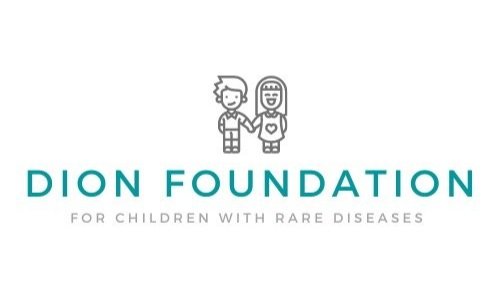LGMD 2C/R5 SARCOGLYCANOPATHY
PATIENT CONTACT LIST
THE DION FOUNDATION IS CURRENTLY RECRUITING LGMD 2C/R5 PATIENTS TO JOIN OUR PATIENT CONTACT LIST
The purpose of this patient contact list is to help assist in the development of treatments for LGMD2C. Our goal for obtaining an accurate patient list includes:
Help researchers identify patients who quality for future clinical studies and trials
Share information regarding natural history studies that help researchers study LGMD2C progression
Share advocacy opportunities for patients/families afflicted with LGMD2C
Assist patients in finding the most up-to-date and disease specific clinical care
Share The Dion Foundation’s involvement in funding research
Provide patients and families with a care network of other patients and families afflicted with LGMD2C
diagnosis
+ care
-
Invitae Unlock™ Muscular Dystrophy Program
Sponsored, no-charge genetic testing
What is the role of genetic testing for muscular dystrophy (MDYS)?
Muscular dystrophy refers to a group of disorders characterised by progressive muscle weakness and loss of muscle tissue. In specific forms, other muscles—including respiratory muscles, cardiac smooth muscles, facial muscles and swallowing muscles—can also be affected.
Many forms of muscular dystrophy have overlapping clinical features making diagnosis difficult. Genetic testing has been proven to shorten the time to diagnosis and prevent misdiagnosis.
Accurate and early identification of affected individuals allows for improved clinical outcomes and the opportunity to participate in clinical trials.
-
MUSCULAR DYSTROPHY ASSOCIATION
Located at more than 150 of the top health care institutions across the United States, MDA Care Centers and Affiliates serve as the nexus for expert clinical care and medical research. Our Care Center Network offers tens of thousands of appointments each year for individuals living with muscular dystrophy to access expert multidisciplinary care, clinical trials, and to connect with MDA and the neuromuscular community.
-
PATIENT
INVOLVEMENT
-
Participating in natural history studies and patient registries can help researchers gain further knowledge about ultra-rare diseases, such as LGMD sarcoglycanopathies.
Furthermore, natural history studies are designed to provide data for clinical trials to replace traditional “placebo” controlled studies.
-
Muscular dystrophy patient advocacy groups have been among the most active in the rare disease drug development space. Notable achievements in the last decade include promulgating the first U.S. clinical research guidance, setting up registries and natural history studies, and investing in companies—some of which have brought potentially disease-modifying products to the market.
Patients’ voice is imperative to drug development: to support research, reform legislature, participate in clinical trial design, and encourage pharmaceutical industry that the patient community is ready for clinical studies.
-

